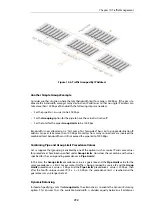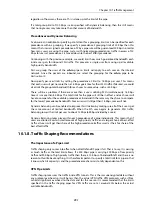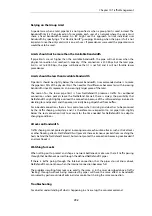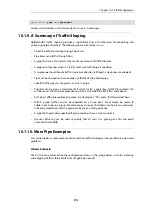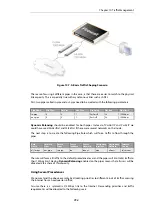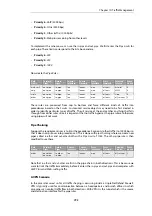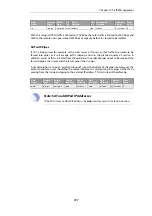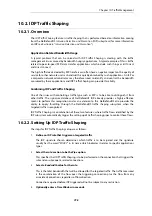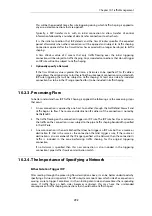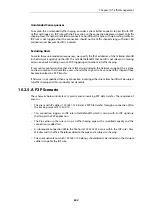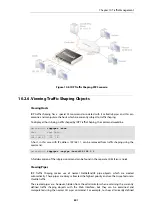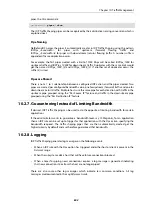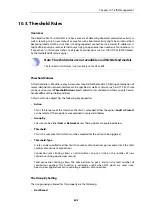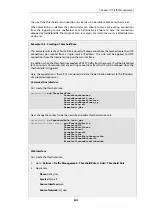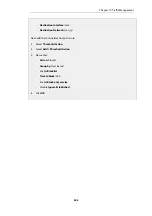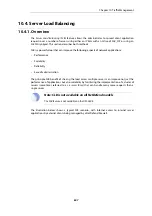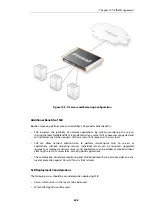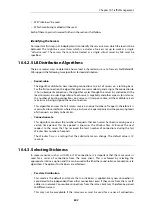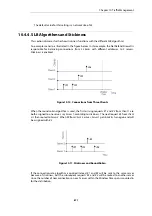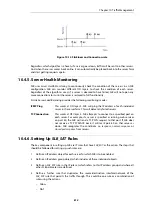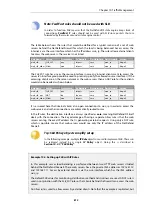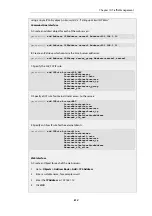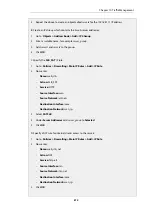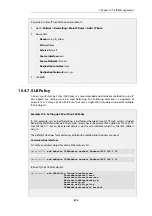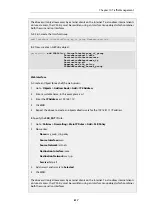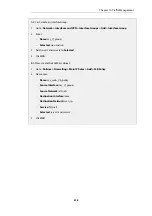
10.3. Threshold Rules
Overview
The objective of a
Threshold Rule
is to have a means of detecting abnormal connection activity as
well as reacting to it. An example of a cause for such abnormal activity might be an internal host
becoming infected with a virus that is making repeated connections to external IP addresses. It
might alternatively be some external source trying to open excessive numbers of connections. (A
"connection" in this context refers to all types of connections, such as TCP, UDP or ICMP, tracked
by the NetDefendOS state-engine).
Note: Threshold rules are not available on all NetDefend models
The threshold rules feature is not available on the DFL-260E.
Threshold Policies
A threshold rule is like other policy based rules found in NetDefendOS. A filtering combination of
source/destination network/interface can be specified as well as a service such as HTTP. Each rule
can have one or more Threshold Action objects added to it as children and these specify how to
handle different threshold conditions.
A
Threshold Action
object has the following key properties:
•
Action
This is the response of the rule when the limit is exceeded. Either the option Audit or Protect
can be selected. These options are explained in more detail below.
•
Group By
The rule can be either Host or Network based. These options are explained below.
•
Threshold
This is the numerical limit which must be exceeded for the action to be triggered.
•
Threshold Type
A rule can be specified to either limit the number of connections per second or limit the total
number of concurrent connections.
Connection rate Limiting allows an administrator to put a limit on the number of new
connections being opened per second.
Total connection limiting allows the administrator to put a limit on the total number of
connections opened. This function is extremely useful when NAT pools are used since
peer-to-peer applications can require large numbers of connections.
The Group By Setting
The two groupings allowed for this property are the following:
•
Host Based
Chapter 10: Traffic Management
803
Содержание NetDefendOS
Страница 30: ...Figure 1 3 Packet Flow Schematic Part III Chapter 1 NetDefendOS Overview 30 ...
Страница 32: ...Chapter 1 NetDefendOS Overview 32 ...
Страница 144: ...Chapter 2 Management and Maintenance 144 ...
Страница 220: ... Enable DHCP passthrough Enable L2 passthrough for non IP protocols 4 Click OK Chapter 3 Fundamentals 220 ...
Страница 267: ... SourceNetwork lannet DestinationInterface any DestinationNetwork all nets 4 Click OK Chapter 3 Fundamentals 267 ...
Страница 284: ...Chapter 3 Fundamentals 284 ...
Страница 360: ...The ospf command options are fully described in the separate NetDefendOS CLI Reference Guide Chapter 4 Routing 360 ...
Страница 392: ...Chapter 4 Routing 392 ...
Страница 396: ...Web Interface 1 Go to Network Ethernet If1 2 Select Enable DHCP 3 Click OK Chapter 5 DHCP Services 396 ...
Страница 419: ... Host 2001 DB8 1 MAC 00 90 12 13 14 15 5 Click OK Chapter 5 DHCP Services 419 ...
Страница 420: ...Chapter 5 DHCP Services 420 ...
Страница 424: ...2 Now enter Name lan_Access Action Expect Interface lan Network lannet 3 Click OK Chapter 6 Security Mechanisms 424 ...
Страница 573: ...Chapter 6 Security Mechanisms 573 ...
Страница 575: ...This section describes and provides examples of configuring NAT and SAT rules Chapter 7 Address Translation 575 ...
Страница 607: ...Chapter 7 Address Translation 607 ...
Страница 666: ...Chapter 8 User Authentication 666 ...
Страница 775: ...Chapter 9 VPN 775 ...
Страница 819: ...Chapter 10 Traffic Management 819 ...
Страница 842: ...Chapter 11 High Availability 842 ...
Страница 866: ...Default Enabled Chapter 13 Advanced Settings 866 ...
Страница 879: ...Chapter 13 Advanced Settings 879 ...


